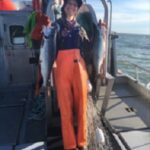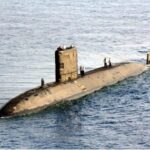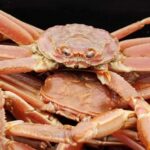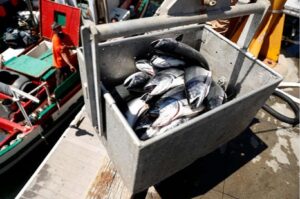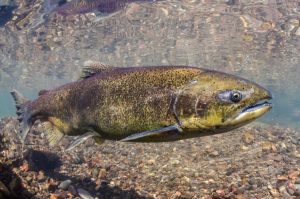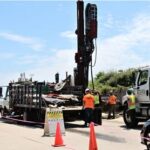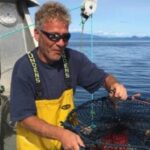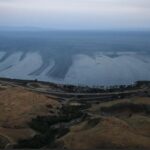Tag Archives: Pacific Halibut
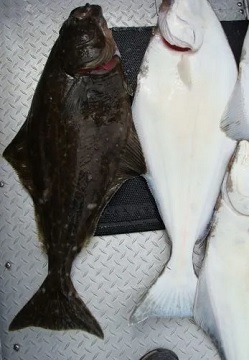
Alaska Halibut Season Opens March 10
Pacific halibut season opens Sunday, March 10 statewide in Alaska. NOAA Fisheries filed notice of their effectiveness in the Federal Register today, which will publish March 7, 2023. The regulations, adopted at the annual meeting of the International Pacific Halibut Commission (IPHC) in January, took effect when the Secretary of State accepted them, with the Secretary of Commerce’s concurrence. Included in this season’s federal regulations are the catch limits established by the IPHC and basic regulations for the commercial and sport halibut fisheries. >click to read< 18:03
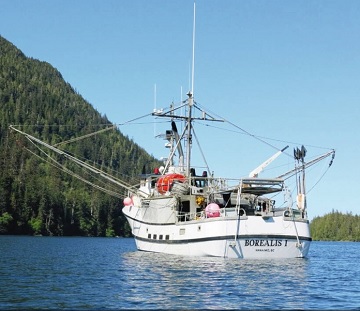
British Columbia: Hooked on halibut: For many commercial fishers, it’s a family affair
The commercial halibut season is underway along the coast of British Columbia and boats are already starting to deliver the flat fish to dinner plates. From now until early December, the B.C. halibut fleet will haul in an estimated 5.7 million pounds of halibut. The Americans will take the lion’s share of this year’s 41-million-pound total allowable catch, nearly 80%, because their territory stretches over California, Oregon, Washington and all of Alaska to the tip of the Aleutian Islands and covers nine of the 10 designated halibut-fishing areas along the Pacific Coast. Tiare Boyes and Cheri Hansen weigh in on what it’s like to work on the water during the halibut fishing season. Photos, >click to read< 11:14

NPFMC ponders changes in the halibut catch sharing plan
When the North Pacific Fishery Management Council adopted its halibut Catch Share Plan back 2014, charter operators were granted 125% of their historic catch at low levels of abundance, with that additional 25% coming out of quota for the commercial longline sector. Commercial longliners were assured that no further uncompensated reallocations would be considered, but now federal fisheries managers are doing just that. The Halibut Coalition is urging its membership of commercial harvesters to write to the governors of Alaska, Washington and Oregon expressing their views, as the representatives of those states on the NPFMC voted in favor of considering changes to halibut allocations. >click to read< 13:41
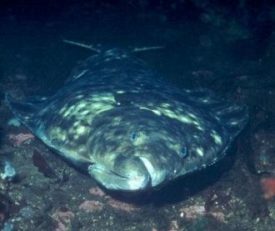
Halibut catch limits soar for Central Gulf fishermen
The International Pacific Halibut Commission (IPHC) completed its 97th Annual Meeting in Seattle, Washington, on Friday (Jan. 29), with decisions on total halibut mortality, fishery limits, fishing dates, and other fishery regulation changes for the upcoming season… The 2021 Pacific Halibut commercial fishery catch limits went up significantly for fishermen in the regulatory Area 3A, the Central Gulf of Alaska, with a 26.95-percent increase from just over 7-million pounds available in 2020, to nearly 9-million pounds this year. All other areas but two saw an increase in poundage from last year. Canadian fishermen in Area 2B get a two-percent increase, equivalent to 11,000 pounds. >click to read< 17:26

International Pacific Halibut Commission cuts 2020 harvest levels for US waters
Amid ongoing stock declines and concerns about commercial bycatch, the International Pacific Halibut Commission opted to cut allocations in Southcentral and Southeast Alaska for 2020.,, U.S. Commissioner Chris Oliver said he recognized that there maybe some dissatisfaction on the U.S. side,, Canadian Commissioner Peter DeGreef said he objected to the level of fishing intensity as well, saying that without a cut,,, >click to read< 10:06
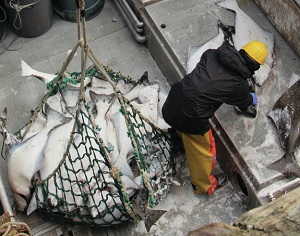
Uneven status of Pacific halibut revealed by annual data
Following the trend of the past several years, overall Pacific halibut biomass seems to be down again. The most recent stock assessment presented to the International Pacific Halibut Commission for its interim meeting on Nov. 25-26 shows a coastwide decline in spawning biomass, though that decline isn’t even across all areas. That’s a continuation of a trend seen in stock assessments since 2015. Particularly, surveys have indicated lower numbers of halibut in the central Gulf of Alaska. >click to read< 08:40
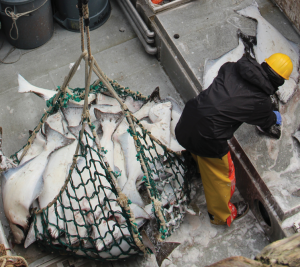
US, Canada agree on 2019 halibut harvest limits
American and Canadian halibut fishermen finally have an approved set of catch limits for the 2019 season. With the discord of its last annual meeting hanging in the air, the International Pacific Halibut Commission agreed on a set of total allowable catch limits for Pacific halibut in American and Canadian waters during its meeting from Jan. 28 to Feb. 1. The overall catch limit of 38.61 million pounds is slightly up from the 2018 quota — about 1.4 million pounds more. That’s up from 29.9 million pounds in 2016 and from 31.4 million pounds in 2017.,,, >click to read<20:45
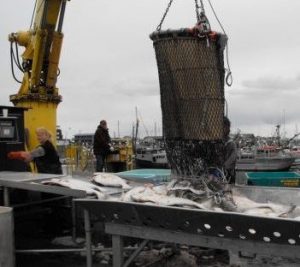
Alaska – Halibut dock prices rebound, but upswing may not last
Halibut prices fell about $2 per pound at the beginning of the season. But there’s good news for some fishermen: ex-vessel prices are increasing slightly around the state. “We did see the ex-vessel price for halibut perk up a bit where we’re at $6.25, $6.50, $6.75 here in Homer today,” said Doug Bowen, who tracks halibut prices around the Gulf of Alaska for Alaska Boats and Permits, a vessel-and-fishing permit broker in Homer. >click to read<16:22
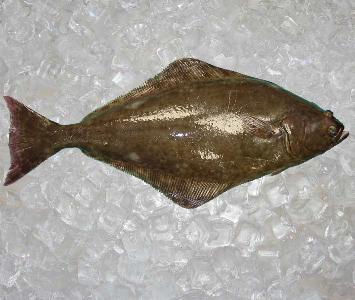
Alaskan fishermen aren’t the only ones noticing the rise of Atlantic halibut
As prices and demand for Pacific halibut have fallen in Alaska, commercial fishermen say a new Canadian competitor is to blame. Since 2012, Canadian imports of fresh Atlantic halibut have grown roughly 60 percent. Historically, Atlantic halibut has not competed with its close relative on the West Coast since New England and Canadian fishermen overfished stocks in the late 1880s. But as the catch continues to grow north of the border, fishermen in New England are working towards restarting a fishery in U.S. waters.,, “A lot of those boats are fishing on the U.S.-Canadian line and having very good results, and it’s been going on for a while,” Mike Russo said, a New England-based commercial fisherman. >click to read<16:03
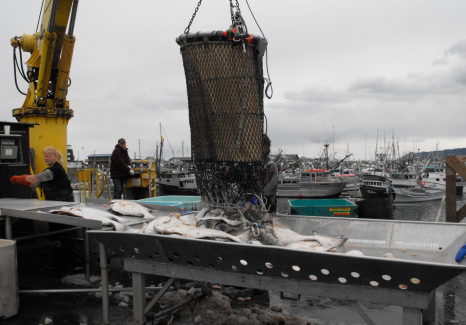
Halibut surplus and competition on East Coast drives dock prices down
Halibut prices have fallen about $2 per pound, and decreasing demand has left plenty sitting in the freezer from last year. Billy Sullivan owns a small fish-buying operation in Homer, and he said years of historically high prices – about $20 to $30 per pound at your typical supermarket – have driven consumers away from purchasing Pacific halibut.,, Consumers are reluctant to buy expensive fillets in grocery stores and restaurants. A new competitor also is taking over a large portion of the market. “They went and found alternatives to expensive halibut and the East Coast fish fills in,” Sullivan said. >click to read<12:18

Homer halibut fishermen facing more competition from the East Coast
The International Halibut Commission, or the IPHC, will kick off its annual meeting in Portland Monday. The international regulatory body is expected to slash the total allowable catch of halibut on the West Coast by 24 percent due to declining stocks. With potentially less Pacific halibut on the market, prices are likely to increase, but a new direct competitor on the East Coast may hamper the market’s ability to compensate for lower halibut stocks in Alaska. >click here to read< 16:33

A tricky break for business fishermen: Pacific halibut catches more likely to drop subsequent 12 months
It‘s going to be a tough year for many Alaska fishermen. After announcements of a massive drop in cod stocks, the industry learned last week that Pacific halibut catches are likely to drop by 20 percent next year, and the declines could continue for several years. That could bring the coastwide catch for 2018, meaning from Oregon to British Columbia to the Bering Sea, to about 31 million pounds. Scientists at the International Pacific Halibut Commission interim meeting in Seattle revealed that survey results showed halibut numbers were down,,, click here to read the story 09:57

Pacific Halibut numbers could drop
Scientists monitoring halibut say there could be a decline in the bottom fish along the coast of the U.S. and Canada in upcoming years if the current level of fishing continues. The International Pacific Halibut Commission oversees management of the fish along the coast from Alaska to California. Commissioners had an interim meeting Tuesday and Wednesday, November 28-29th in Seattle and heard about this year’s catch and the latest estimates of halibut stocks. Scientists found fewer younger halibut in survey fishing done up and down the coast this year. click here to read the story 16:10
Guest Opinion: State needs to push for halibut protection – by John L. Beath
 The Pacific halibut may be an icon of our region, but over the past 10 years in the Bering Sea, it’s become increasingly obvious that we aren’t doing as good a job of protecting them as we should. A total of 62.6 million pounds of halibut were caught as bycatch, harvested unintentionally and thrown overboard dead. To compare, the hook-and-line fishermen targeting halibut only caught 69.7 million pounds in the same area over the same period of time. Read the rest here 10:52
The Pacific halibut may be an icon of our region, but over the past 10 years in the Bering Sea, it’s become increasingly obvious that we aren’t doing as good a job of protecting them as we should. A total of 62.6 million pounds of halibut were caught as bycatch, harvested unintentionally and thrown overboard dead. To compare, the hook-and-line fishermen targeting halibut only caught 69.7 million pounds in the same area over the same period of time. Read the rest here 10:52
AK: Tracking Halibut
![]() Fisheries are managed under certain assumptions that determine whether a fisherman can support a family, if a consumer can buy a fish at the local grocery and how much tourist traffic enters the state. Halibut are managed as if they spawn every year and move freely, without preference to localized areas. But are these assumptions true? Audio , Read the rest here 08:37
Fisheries are managed under certain assumptions that determine whether a fisherman can support a family, if a consumer can buy a fish at the local grocery and how much tourist traffic enters the state. Halibut are managed as if they spawn every year and move freely, without preference to localized areas. But are these assumptions true? Audio , Read the rest here 08:37
North Pacific Halibut Bycatch Limit Could See 50 Percent Cut
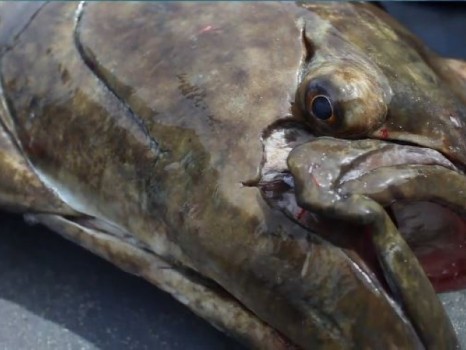 Halibut harvests have been on the decline in the Bering Sea for years, but the amount that trawlers and catcher-processors are allowed to take has stayed the same. Now, federal regulators have agreed to consider stiffer limits on halibut bycatch. This weekend, the voted to study the impact of cutting the 10 million-pound bycatch limit by as much as 50 percent. Read the rest here 16:17
Halibut harvests have been on the decline in the Bering Sea for years, but the amount that trawlers and catcher-processors are allowed to take has stayed the same. Now, federal regulators have agreed to consider stiffer limits on halibut bycatch. This weekend, the voted to study the impact of cutting the 10 million-pound bycatch limit by as much as 50 percent. Read the rest here 16:17
2014 Pacific Halibut catches likely to be cut 21% — ‘blue line’ catch recommendations by AK region
Fishery scientists with the International Pacific Halibut Commission have put forth a 2014 coast wide commercial catch total of 24.45 million pounds, a 21% decrease from the 31 million pounds allowed for this year. more@fishradio 20:00
Fishing for truth in the feds’ latest Alaska halibut management plan – Craig Medred | Oct 01, 2012 Alaska Dispatch
With another round in Alaska’s halibut war shaping up between commercial fishermen and charter-boat operators, the staff of the National Marine Fisheries Service has written a 333-page indictment of what is wrong with management of the big flatfish in the North Pacific.
“The Regulatory Amendment for a Catch Sharing Plan For the Pacific Halibut Charter Sector and Commercial Setline Sector in International Pacific Halibut Commission Regulatory Area 2C and Area 3A” — as federal regulators call their hefty tome — was not intended as such as indictment, but that is what it ended up becoming. It is a long-winded, redundant, hard-to-fathom testament to what the agency didn’t do in terms of assessing economic impacts associated with changes in the halibut fishery, and what it plans to do to benefit commercial fishermen.
Where other U.S. resource agencies focus on generating revenue for the cash-strapped U.S. Treasury by making money off public resources — be it oil, gas, minerals, timber range land, or even scenery — the Fisheries Service is focused on increasing revenue for the fishermen with whom it long ago formed an alliance.
Syndicate Fish Wars: How the battle over halibut has impacted charters and commercial fishermen
Is the goal job elimination?
Show me the money
Charter operators growing tired
Damping down tensions

































